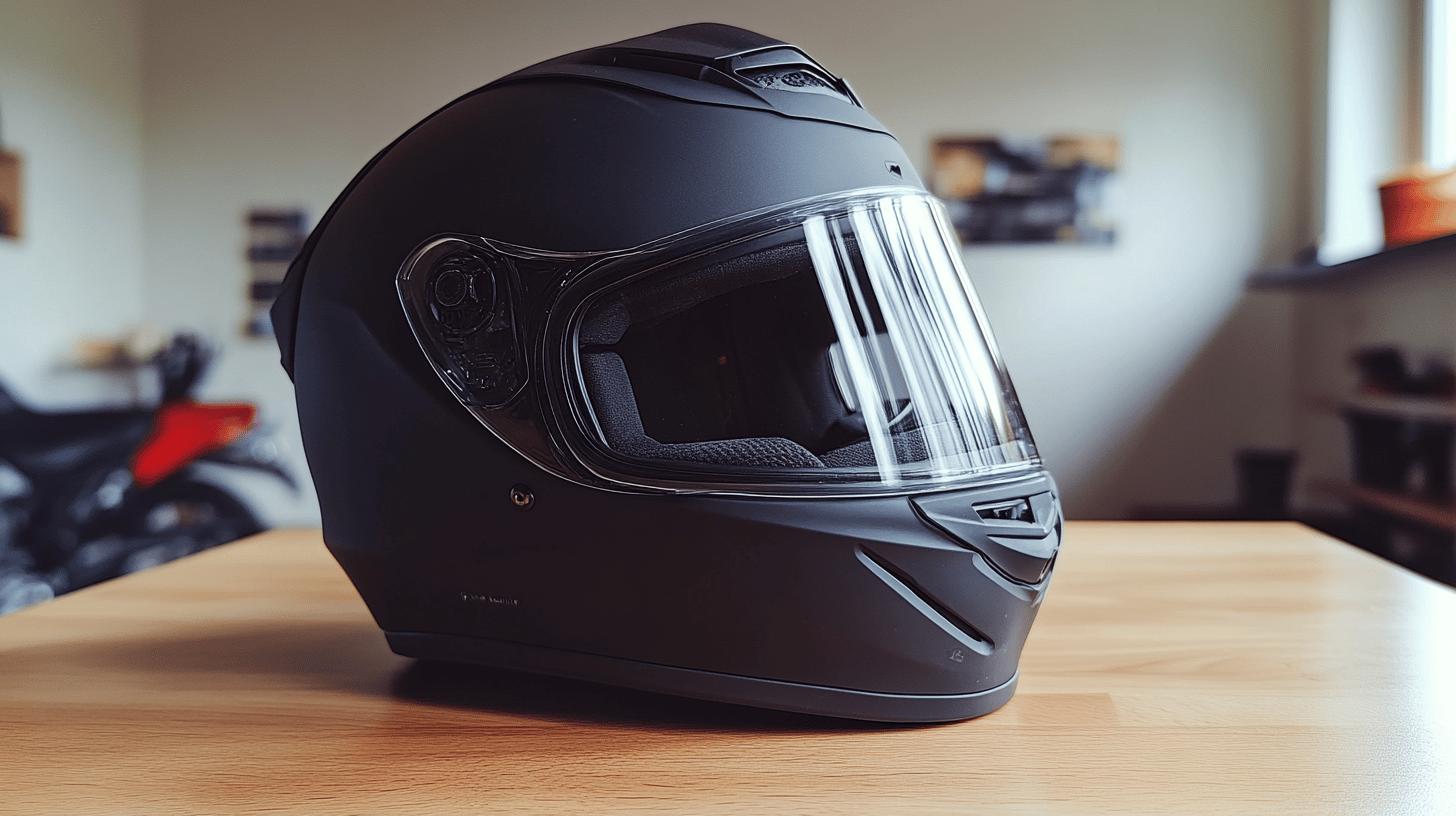Ever wonder if buying a helmet online really guarantees your safety and comfort? The truth is, a seemingly perfect online order may fall short of expectations once on your head. The definitive solution lies in visiting a physical gear shop near you.
Here, you can experience firsthand the snug fit vital for protection and confidence. This article will guide you in finding local stores where you can try on motorcycle helmets, critical for ensuring the right fit. Discover why trying before buying could redefine your riding experience.
Finding Nearby Stores to Try On Motorcycle Helmets

Visiting a physical store to try on motorcycle helmets is highly beneficial for ensuring a proper fit, which is crucial for both safety and comfort. While purchasing online offers convenience, the tactile experience of fitting a helmet in-store allows riders to assess snugness and comfort directly.
Helmets that fit well are less likely to come off during an accident, significantly reducing injury risks. Moreover, the opportunity to see and feel different materials, colors, and styles, such as popular black and matte black options, aids in making an informed decision.
Physical shops often have knowledgeable staff to provide guidance, enhancing the overall buying experience.
Finding a motorcycle helmet store near you can be straightforward with the use of online resources. Search engines, map services, and motorcycle gear directories often list nearby shops, allowing riders to locate the best motorcycle helmet store in their vicinity.
Many directories categorize stores based on customer reviews, inventory variety, and specialty services, helping to identify the most reputable options. Leveraging community forums and social media groups can also yield personal recommendations for trusted local shops.
-
RevZilla Stores
-
Cycle Gear Locations
-
Harley-Davidson Dealerships
-
Independent motorcycle gear shops
-
Local motorsport retailers
Trying on helmets in person ensures that you select a model that matches your head shape and size, which is vital for optimal protection. The fit can be checked for pressure points and discomfort, avoiding the hassle of returns or exchanges.
Engaging with the helmet firsthand allows riders to test ventilation features and other design elements, ensuring the chosen helmet meets personal preferences and riding conditions. By visiting a store, riders gain peace of mind knowing they've selected equipment that truly fits their needs.
What to Look for When Trying On Helmets In-Store

Trying on motorcycle helmets in-store is essential for achieving the correct fit, which directly impacts both safety and comfort. A helmet that fits snugly will significantly reduce the risk of coming off in an accident, thus offering better protection.
It’s not just about the helmet staying on your head; a proper fit ensures that the helmet can absorb impact more effectively. Comfort is another aspect that cannot be overlooked.
A helmet that pinches or applies uneven pressure can be distracting or even painful over time, detracting from the riding experience. Therefore, taking the time to try on different models and sizes in-store is a crucial step in finding the right helmet.
To begin finding the right helmet fit, understanding your head shape is vital. This involves measuring the circumference of your head at its widest point, usually just above the eyebrows.
Size charts, available in-store or online, give a general idea of the size you might need, but they don’t guarantee a perfect fit. Helmets come in various shapes—oval, round, and intermediate—so matching the helmet’s internal shape with your head shape is crucial.
Trying on helmets in-store allows you to assess how the helmet conforms to your head and make necessary adjustments.
-
Check for snugness: The helmet should fit closely but not uncomfortably tight.
-
Assess comfort: Ensure there are no immediate discomforts or pressure points.
-
Test for movement: The helmet should not move independently when you shake your head.
- Evaluate weight distribution: The helmet should feel balanced, not tipping forward or backward.
Top Brands and Models Available in Physical Stores

When selecting a motorcycle helmet, brand reputation plays a crucial role in ensuring safety and quality. Established brands in the industry often adhere to rigorous testing standards, providing riders with peace of mind regarding impact protection and durability.
Top-tier brands are renowned for their track record in producing helmets designed for race conditions and everyday riding. Investing in a reputable brand means benefiting from innovative designs and technologies aimed at enhancing rider safety.
Among the leading brands, Arai and Bell consistently stand out for their commitment to high safety standards and quality craftsmanship. Arai racing helmets are celebrated for their aerodynamic efficiency and comfort, making them a preferred choice for professional racers.
Bell helmets, widely available in various stores, are known for their advanced safety features and sleek designs, appealing to both casual riders and enthusiasts. Shoei helmets are also a popular choice, known for their snug fit and superior ventilation systems.
Simpson racing helmets, with their distinctive look and robust construction, cater to those seeking a unique yet functional option.
| Brand | Model | Description |
|---|---|---|
| Arai | Corsair-X | High-performance with advanced aerodynamics |
| Bell | Star DLX MIPS | Features MIPS technology for added safety |
| Shoei | RF-1400 | Offers excellent noise reduction and comfort |
| Simpson | Ghost Bandit | Combines style with practical features |
| HJC | RPHA 11 Pro | Designed for optimal ventilation and performance |
When trying on helmets in-store, evaluating these models involves more than just checking the fit. It is essential to inspect the helmet's build quality, including the lining and fastening system. Assess the visibility from the helmet's visor and test the ventilation features to ensure comfort across different riding conditions.
Engaging with store staff who are knowledgeable about these brands can provide additional insights, helping you make an informed decision that aligns with your riding needs and preferences.
Exploring Helmet Features and Customization Options

Motorcycle helmets today come with a range of features designed to enhance both safety and convenience for riders. Bluetooth connectivity is one of the most sought-after features, allowing riders to communicate hands-free or enjoy music without compromising safety.
Modular motorcycle helmets, which feature a flip-up front, offer flexibility and ease, particularly for those who wear glasses or prefer an open-face feel at times. Ventilation systems are also crucial, providing comfort by allowing airflow to regulate temperature during long rides in varying weather conditions.
-
Custom paint jobs for unique aesthetics
-
DIY decal kits for personal touches
-
Professional airbrushing for intricate designs
-
Interior padding customization for enhanced comfort
-
Visor tints for different lighting conditions
-
Integrated cameras for action footage
These features and customization options significantly enhance the riding experience by providing personalized comfort and style. Custom-designed helmets not only stand out visually but also offer a sense of individuality that reflects the rider's personality.
Meanwhile, practical additions like Bluetooth systems and modular designs contribute to a smoother, more enjoyable ride, enabling seamless communication and adaptability in any riding scenario. By exploring these options, riders can tailor their helmets to meet specific needs, improving both functionality and aesthetic appeal.
Understanding Helmet Safety Standards and Certifications

Helmet safety standards are pivotal in ensuring rider protection, making certifications like DOT and ECE crucial when selecting a motorcycle helmet. DOT (Department of Transportation) certification is mandatory for helmets sold in the United States, confirming they meet specific impact resistance and penetration protection criteria.
ECE (Economic Commission for Europe) certification, commonly used across European countries, follows stringent testing protocols under the United Nations agreement, ensuring helmets provide adequate protection during accidents.
These certifications are not just bureaucratic stamps; they represent a helmet's ability to withstand significant impact forces, thereby reducing the risk of injury during crashes.
Beyond DOT and ECE, additional certifications like Snell offer enhanced safety assurances. The Snell Memorial Foundation conducts rigorous testing that goes beyond basic requirements, assessing helmets for shock absorption, retention system strength, and shell penetration resistance.
Helmets that receive Snell certification often undergo more comprehensive testing, providing a higher level of safety. While Snell-rated helmets might come at a premium, the investment is justified by the added protection they offer.
When evaluating helmets, checking for these certifications on labels ensures the helmet meets or exceeds safety benchmarks, vital for every rider's peace of mind.
-
DOT Certification: Required for helmets in the U.S., ensuring basic impact protection.
-
ECE Certification: Used in Europe, focusing on comprehensive crash testing.
-
Snell Certification: Indicates rigorous testing for shock absorption and more.
-
BSI (British Standards Institution): Another mark of quality, primarily seen in the UK.
-
Helmet Impact Ratings: Evaluate performance in various accident scenarios.
Understanding these labels and standards ensures that riders are choosing helmets that provide the most protection possible, aligning with both regional regulations and personal safety needs.
Final Words
Securing the right motorcycle helmet involves visiting local stores, understanding proper fit, and knowing top brands. Trying on helmets in person offers a tangible assessment of comfort and safety. Evaluating brands like Arai and Bell ensures a reliable choice.
Exploring features and customization enhances your ride, while adhering to safety certifications guards your well-being. For those wondering where to try on motorcycle helmets, prioritizing a physical visit ensures a safer and more confident ride. Enjoy your enhanced riding experience!
FAQ
Where can I try on motorcycle helmets?
You can try on motorcycle helmets at local gear shops or larger retail chains. Using online resources like Google Maps helps locate stores nearby. Reddit may offer community recommendations as well.
Are there online options for trying on motorcycle helmets?
While online shopping provides variety, trying helmets in-person ensures correct fit and safety. Some online retailers offer virtual fitting tools or return policies for exchanges.
How do I test a motorcycle helmet?
Testing involves checking helmet fit and comfort. Ensure it’s snug without causing pressure points. Shake your head to confirm stability. Consider safety features and certifications during your assessment.
How much should I pay for a good motorcycle helmet?
A good motorcycle helmet typically ranges from $150 to $600. Prices vary based on brand reputation, materials used, and additional features like built-in Bluetooth or advanced ventilation systems.
What states allow riding without a helmet?
States like Illinois and Iowa don't require helmet use for adult motorcyclists. Helmet laws vary, so check local regulations before riding without head protection. Always prioritize safety over convenience.

Mark Anderson is a trusted expert with over 25 years of riding experience. At 56, his deep knowledge of long-distance touring and participation in major motorcycle rallies makes him a reliable source for gear recommendations on ProtectiveGearz. Mark’s decades of firsthand experience ensure his advice is authoritative and valuable to riders seeking expert guidance.



